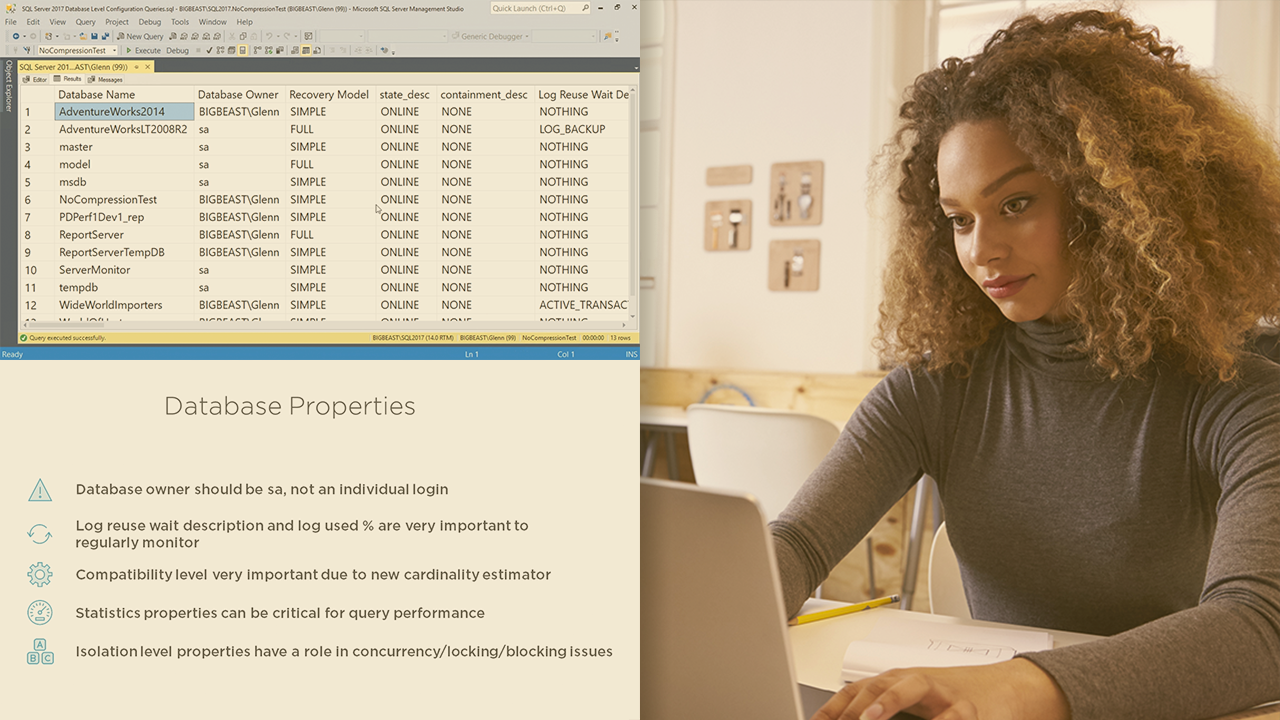- Course
SQL Server 2017: Diagnosing Configuration Issues with DMVs
Learn how to easily query SQL Server 2017 for configuration information to help identify misconfigurations that can affect performance and stability. This course is applicable to anyone responsible for SQL Server 2017 and earlier versions.

- Course
SQL Server 2017: Diagnosing Configuration Issues with DMVs
Learn how to easily query SQL Server 2017 for configuration information to help identify misconfigurations that can affect performance and stability. This course is applicable to anyone responsible for SQL Server 2017 and earlier versions.
Get started today
Access this course and other top-rated tech content with one of our business plans.
Try this course for free
Access this course and other top-rated tech content with one of our individual plans.
This course is included in the libraries shown below:
- Data
What you'll learn
It is very common for SQL Server instances to be configured incorrectly in one or more ways, and this often has a detrimental effect on workload performance and stability. In this course, SQL Server 2017: Diagnosing Configuration Issues with DMVs, you will see more than 30 DMV queries you can use to easily examine SQL Server instance and database configuration information. First, you will learn how to detect and correct many common configuration issues with your hardware, storage, operating system, SQL Server instance, and your database properties. Then, you will be given the best practices for properly checking an instance of SQL Server for configuration issues, both at the instance-level and at a database level. Finally, you will see the configuration settings that you can use to have a more reliable and better performing SQL Server environment. By the end of this course, you will be able to find and correct the most common SQL Server configuration issues. This course is perfect for anyone who is responsible for a SQL Server 2017 instance, with most topics also applicable to SQL Server 2016 and earlier versions.

